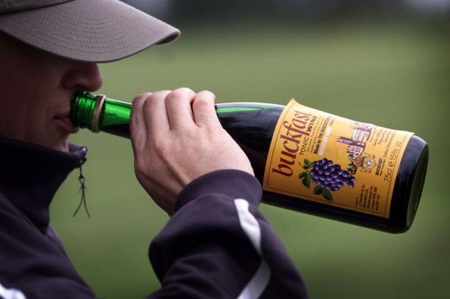Scotland Set to Go Forward with Minimum Unit Pricing
 On November 15, 2017, the UK Supreme Court cleared the way for Scotland to institute a decisive strategy to control death and injury from alcohol—minimum unit pricing (MUP). By setting a floor for retail price of alcohol, MUP places high-ABV, low-price beverages in a higher price tier, creating a financial barrier to binge drinking. Although the policy had been passed in 2012, the Scotch Whiskey Association (an industry group backed by global alcohol giant Diageo) sued in both UK and European Union courts to keep it from going into effect. After the 2017 decision, the Association announced they would no longer be challenging it, marking a victory of public health advocates in Scotland and a promising precedent for legislators worldwide.
On November 15, 2017, the UK Supreme Court cleared the way for Scotland to institute a decisive strategy to control death and injury from alcohol—minimum unit pricing (MUP). By setting a floor for retail price of alcohol, MUP places high-ABV, low-price beverages in a higher price tier, creating a financial barrier to binge drinking. Although the policy had been passed in 2012, the Scotch Whiskey Association (an industry group backed by global alcohol giant Diageo) sued in both UK and European Union courts to keep it from going into effect. After the 2017 decision, the Association announced they would no longer be challenging it, marking a victory of public health advocates in Scotland and a promising precedent for legislators worldwide.
“This has been a long road—no doubt the policy will continue to have its critics—but it is a bold and necessary move to improve public health,” Scotland’s First Minister Nicola Sturgeon told the BBC.
Unlike strict price controls or excise taxes, Scotland’s minimum unit pricing sets only the shelf price, meaning the retailer keeps all profits above the prices set by manufacturers. While this does not qualify as a charge-for-harm strategy since no funds are recouped by the state, it was a key to the Supreme Court’s decision. The judges praised the policy’s ability to target “the groups most affected in a way that an increase in excise or VAT does not.”
Scotland is not the first country to implement MUP. Canada empowered its provincial governments to set a floor price for alcohol, a policy that seems to effective when used. A recent study demonstrated that a 10% increase in minimum price in Saskatchewan was associated with an 8% decrease in consumption and 9% decrease in alcohol-related hospitalizations. (By comparison, the province of Alberta opted not to institute MUP, and saw no change in consumption or hospitalization.)
Scottish Health Secretary Shona Robison expects similar reductions. Speaking to the Guardian, she cited 1,265 alcohol-related deaths in 2016, a rise of 10% from the previous year. “These numbers are completely unacceptable. Behind every one of these statistics is a person, a family, and a community.” With MUP in place, Robison’s department predicts 392 fewer deaths and 8,254 hospital admissions tied to alcohol-related causes.
Moreover, young adults are especially sensitive to price, liable to binge drink, and susceptible to harm from injury, accident, and suicide. By setting a price threshold that affects the products specifically targeted at youth, MUP performs double duty as both harm reduction and prevention.
“This was a hard fought victory against an industry not afraid to throw its weight and money around,” said Bruce Lee Livingston, CEO/Executive Director of Alcohol Justice. “Other countries need to take this lesson—price is prevention and Big Alcohol can be beaten.”
The BBC report notes that David Cameron, at that time the Prime Minister of the UK, pushed for MUP in 2012. That effort wilted in the face pushback from Big Alcohol, but after Scotland’s success, the other constituent countries of the UK are expected to approach similar legislation individually.
MUP goes into effect in Scotland on May 1, 2018. Its effectiveness will be monitored and the policy subject to a renewal vote after 6 years.
READ MORE about the legal fight for minimum unit pricing.
READ MORE about the fight for common-sense regulations in alcohol sales.
Help us hold Big Alcohol accountable for the harm its products cause.
| GET ACTION ALERTS AND eNEWS |
STAY CONNECTED    |
CONTACT US 24 Belvedere St. San Rafael, CA 94901 415-456-5692 |
SUPPORT US Terms of Service & Privacy Policy |


